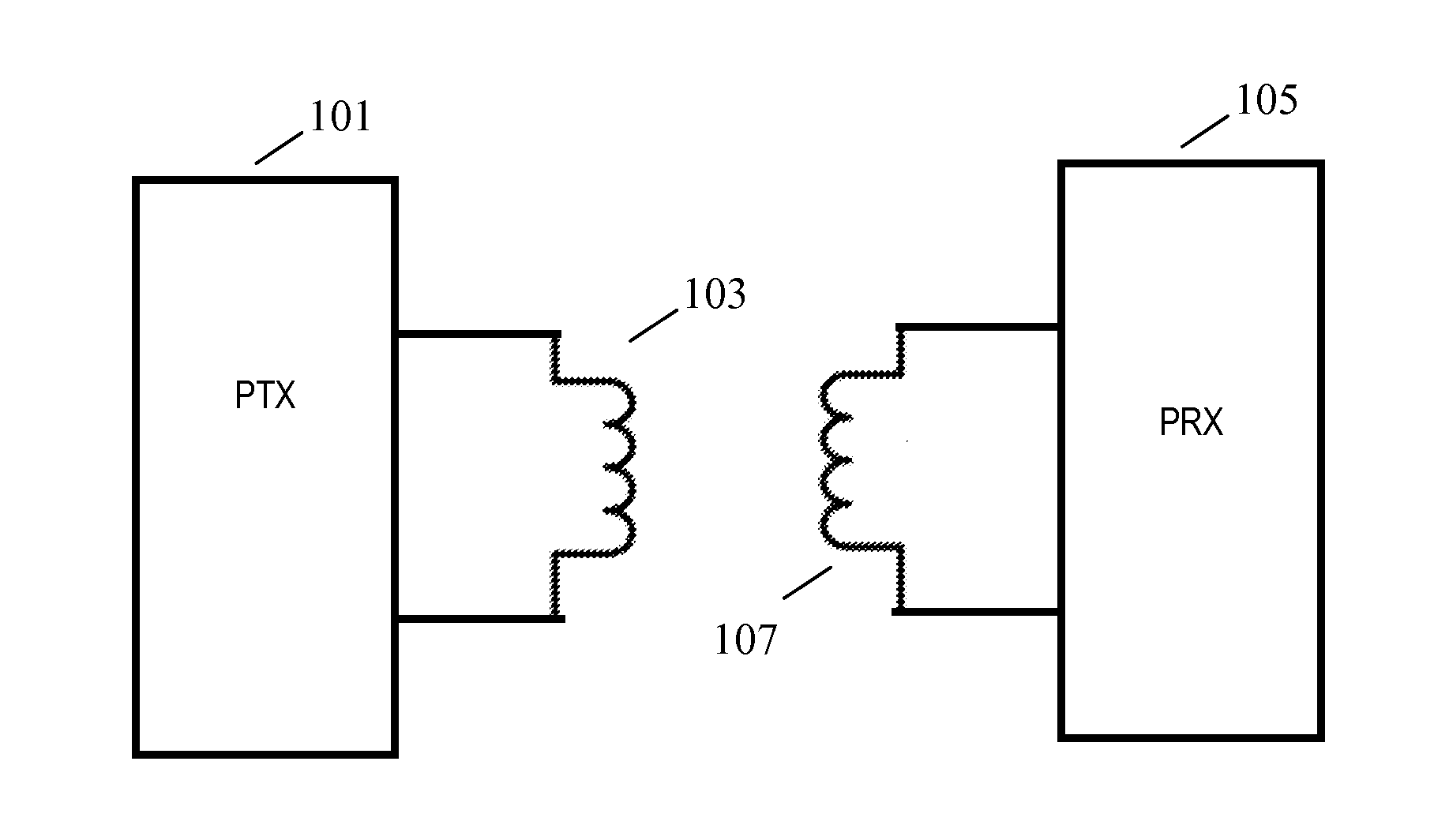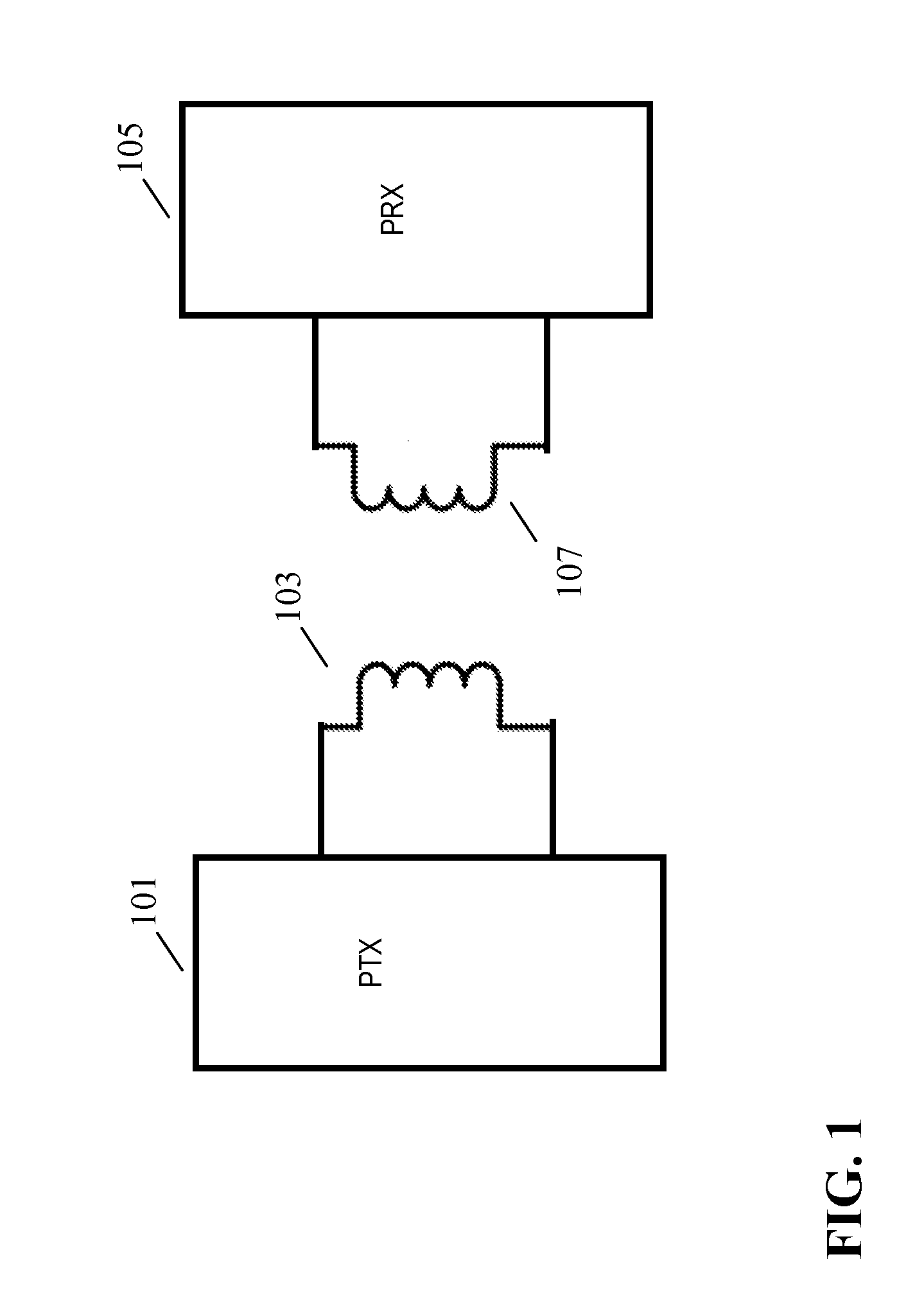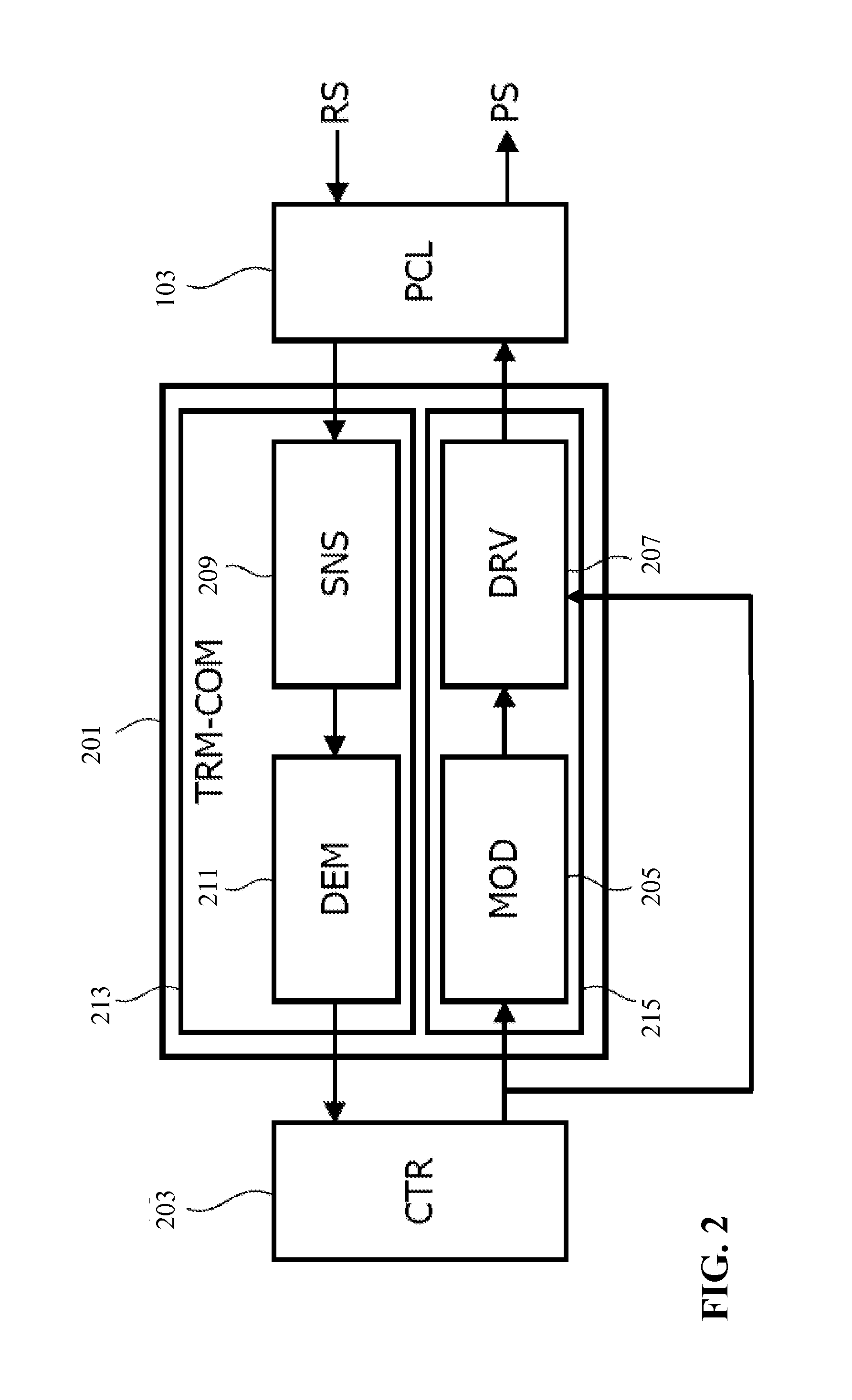Wireless inductive power transfer
a technology of inductive power transfer and wireless, which is applied in the direction of exchanging data chargers, inductances, transportation and packaging, etc., can solve the problems of inconvenient use, impracticality, and battery use, and achieve low complexity operation, efficient signaling, and low complexity operation.
- Summary
- Abstract
- Description
- Claims
- Application Information
AI Technical Summary
Benefits of technology
Problems solved by technology
Method used
Image
Examples
Embodiment Construction
[0103]FIG. 1 illustrates an example of a power transfer system in accordance with some embodiments of the invention. The power transfer system comprises a power transmitter 101 which includes (or is coupled to) a transmitter coil / inductor 103. The system further comprises a power receiver 105 which includes (or is coupled to) a receiver coil / inductor 107.
[0104]It will be appreciate that the power receiver 105 may e.g. be a single integrated device providing both a user functionality (e.g. a communication or computational function) as well as the power transfer / extracting functionality. In other scenarios, the power receiver 105 may only comprise the functionality for extracting power with the power being provided to an external load. In the following the term power receiver 105 will be used to denote both the power transfer / extraction functionality in itself, as well as the combined functionality of the power transfer / extraction functionality and a load powered by this functionality...
PUM
 Login to View More
Login to View More Abstract
Description
Claims
Application Information
 Login to View More
Login to View More - R&D
- Intellectual Property
- Life Sciences
- Materials
- Tech Scout
- Unparalleled Data Quality
- Higher Quality Content
- 60% Fewer Hallucinations
Browse by: Latest US Patents, China's latest patents, Technical Efficacy Thesaurus, Application Domain, Technology Topic, Popular Technical Reports.
© 2025 PatSnap. All rights reserved.Legal|Privacy policy|Modern Slavery Act Transparency Statement|Sitemap|About US| Contact US: help@patsnap.com



